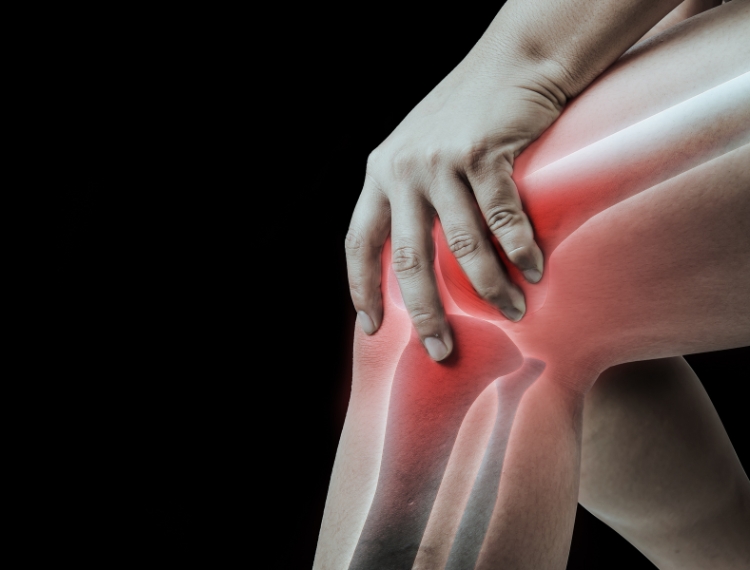views
CT-Guided Robotic Surgery for Safer Shoulder Treatment
Imagine this: You are about to have shoulder surgery. In the past, your surgeon would rely on X-rays, experience, and steady hands. Today, technology allows them to see a detailed 3D map of your shoulder joint before they even begin. Every cut, every movement is pre-planned to the smallest millimetre. This is the power of CT-guided robotic shoulder surgery – a combination of precision imaging and advanced robotics that is transforming patient outcomes.
This blog explains how CT-guided technology works with robotics, why it is such an important advancement for shoulder surgery, and what it means for patients seeking the best treatment.
Understanding the Basics
What is CT-Guided Technology?
CT-guided technology uses a computed tomography (CT) scan to create a three-dimensional model of a patient’s shoulder joint. This model shows every bone, joint surface, and surrounding structure in exceptional detail. The surgeon can study this model before the operation, allowing them to plan exactly how they will approach the procedure.
What is Robotic Shoulder Surgery?
Robotic shoulder surgery is a method where a robotic system assists the surgeon during the operation. The surgeon controls the process, but the robot provides unmatched precision, steadiness, and accuracy. The robotic arm follows the planned surgical path based on the CT scan data, ensuring every movement is exact. Consulting an orthopedic specialist in Ahmedabad can help patients access this advanced technology and receive a personalised treatment plan.
Why Shoulders Need This Precision
The shoulder is one of the most complex joints in the human body. It has the greatest range of motion of any joint, which makes it highly versatile but also prone to injury. Common issues include:
- Rotator cuff tears
- Shoulder arthritis
- Fractures
- Chronic instability
Traditional surgery for these conditions often relies on 2D imaging and the surgeon’s judgement during the operation. While highly skilled surgeons achieve good results, there is still a risk of less-than-perfect alignment or implant placement. This can lead to pain, reduced movement, or the need for another surgery later on.

The Marriage of CT-Guidance and Robotics
When CT-guided technology is combined with robotic-assisted surgery, the result is a highly accurate and personalised approach. Here’s how it works:
- The patient’s shoulder is scanned using CT imaging before surgery.
- The scan is used to create a detailed 3D model, showing the exact structure of the joint.
- This data is loaded into the robotic surgical system’s planning software.
- The surgeon uses the software to plan every step – from incision location to implant positioning.
- During the surgery, the robotic arm follows this plan exactly, while the surgeon supervises and makes any adjustments in real time.
This partnership between surgeon and machine means that there is less guesswork, and every decision is supported by accurate data.
Step-by-Step Journey of a CT-Guided Robotic Shoulder Surgery
|
Stage |
CT-Guided Role |
Robotic Role |
Patient Benefit |
|
Pre-Operative Scan |
Creates 3D image of shoulder |
Uploads to planning software |
Tailored surgical plan |
|
Surgical Planning |
Identifies optimal incision and angles |
Simulates movements |
Reduced tissue damage |
|
Intra-Operative Guidance |
Confirms positioning in real time |
Executes precise cuts |
Minimises errors |
|
Implant Placement |
Ensures correct alignment |
Places implant with stability |
Better long-term outcome |
|
Post-Op Review |
Validates success via scan |
Confirms robotic accuracy |
Peace of mind for patient |
This table shows that every stage is about improving accuracy and reducing risk for the patient.
Advantages of This Approach
CT-guided robotic shoulder surgery offers many benefits:
- Precision – The technology allows for near-perfect accuracy in bone preparation and implant placement.
- Customisation – Every patient’s anatomy is unique, so the surgery plan is fully tailored.
- Faster Recovery – Smaller incisions and minimal disruption to healthy tissue mean quicker healing.
- Better Long-Term Results – Correct alignment ensures the implant works well for longer.
- Lower Risk of Complications – The precise nature of the surgery reduces the chance of infection, bleeding, or the need for revision surgery.
Challenges and Limitations
While this technology is impressive, it is not without challenges:
- Cost and Accessibility – The equipment is expensive and not available in every hospital.
- Training – Surgeons need specialised training to use the technology effectively.
- Imaging Quality – The success of CT-guidance depends on clear, accurate scans.
- Patient Suitability – Some patients, such as those with severe bone loss, may not be suitable candidates for this approach.
Real Patient Experience Story
Consider the case of a 54-year-old man who suffered from severe shoulder arthritis. Daily tasks, such as lifting his arm to reach a cupboard, became painful and difficult. He consulted a shoulder specialist in Ahmedabad, who recommended CT-guided robotic shoulder surgery.
Before the operation, the surgeon used CT scans to study the exact damage and plan the best implant size and position. During surgery, the robotic system followed the plan with millimetre accuracy.
Within weeks, the patient noticed significant improvement. His pain was almost gone, and his range of motion improved. Six months later, he had returned to swimming – something he thought would never be possible again.
Disclaimer: This case is based on an individual patient’s experience, and results may vary for others.

The Future of CT-Guided Robotic Shoulder Surgery
As medical technology continues to evolve, the possibilities for shoulder surgery are growing:
- AI Integration – Artificial intelligence could analyse patient scans and suggest the best surgical approach.
- Remote Surgery – Surgeons may one day operate robotic systems from different locations.
- Greater Accessibility – As costs decrease, more hospitals and clinics may offer this technology.
- Expansion to Other Areas – The same principles could be used in hip, knee, and spine surgeries.
For patients seeking advanced care, finding an experienced orthopedic specialistwho offers such cutting-edge treatments will be key.
Conclusion
CT-guided robotic shoulder surgery is changing the way shoulder problems are treated. By combining detailed imaging with robotic precision, surgeons can provide safer, more accurate, and more personalised care. Patients benefit from quicker recovery times, less pain, and better long-term results.
For those in Ahmedabad looking for advanced shoulder treatment, consulting an expert who offers this modern technology could make all the difference. Dr Meet Mehta is one such specialist who combines expertise with the latest techniques to deliver exceptional patient outcomes.



Comments
0 comment